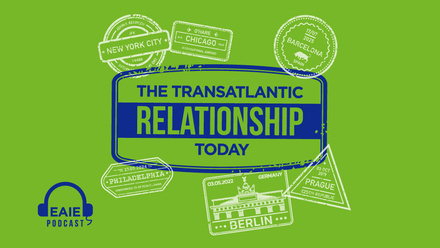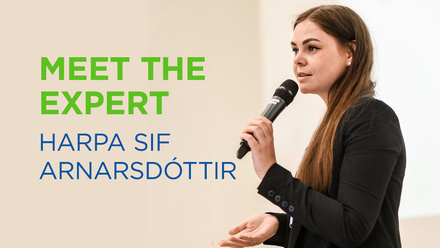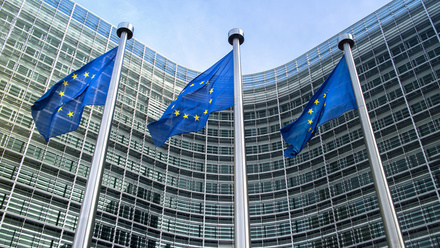A guide to Erasmus+ KA171 ICM funding

The European Commission published the official documents for the 2026 Erasmus+ call for proposals on 12 November 2025. It is therefore timely to focus and reflect on the key role that Erasmus has in building partnerships across Europe and beyond.
Before going further into the topic, I would like to make special mention of Sofia Corradi, also known as "Mamma Erasmus", who conceived the beginnings of the programme and recently passed away. We owe so much to Sofia’s initiative, and to all who followed through with the implementation of a programme that has had and still has such a positive impact on what Europe is today, and that also plays a key role in Europe’s global connections.
This post highlights the role that Erasmus+ mobility funding, particularly KA171 International Credit Mobility (ICM) plays in building and strengthening partnerships beyond EU and associated countries. It offers a perspective from a university in a third country not associated with the programme and it provides tips for all parties involved, HEIs in EU and associated countries and non-associated countries.
I believe it is useful to share the experience of RMIT Europe, where I have been working as Education Partnerships Manager for almost 5 years.
RMIT Europe is the European Innovation hub of RMIT University, an Australian university of technology, design and enterprise with campuses in Melbourne, Australia and Hanoi and Ho Chi Minh, Vietnam and partnerships across Asia-Pacific. The hub connects the university to collaborations and partnerships in Europe, for research and innovation, business development and education. Among other activities, the Education team oversees and coordinates RMIT's participation in different actions of Erasmus+, including applying to KA171 funds with European and associated country HEI partners together with Schools at RMIT Australia and Vietnam every year, as well as coordinating the correct implementation of the projects and successful student and staff mobilities.
Having previously worked for many years at a European HEI, these past years working for a university from a non-associated country, located in two different world regions, has been a very interesting learning exercise that has enhanced even more my appreciation of Erasmus+, as a unique and powerful tool for the promotion of international collaboration, mainly in education, but also research.
In the last years applying for KA171 ICM with EU and associated partners, for Australia and Vietnam, we have been reasonably successful and have gathered a few lessons that may be useful tips for those considering:
Key tips to strengthen your KA171 application:
- All parties should be familiar with the Erasmus KA171 ICM scheme and project to avoid any wrong expectations on workload, outcomes, responsibilities and paperwork involved.
- Make a strategic selection of partners/regions. It is preferable to select partners with an existing or potential strong collaboration, preferably multilayered, including student exchange, interest for or current programmes collaborations, co-supervised PhD activity, research alignment and projects. Previous or potential strong collaborations ensure the funds will be used with purpose and will contribute to extending and strengthening the partnership. In the case of new or recent partnerships it is important to present a good case on how the Erasmus funds will support the building of collaborations, aligning to the priorities of the programme. In the case of a HEI in EU and associated countries applying for funds with different regions, it is key to success that the criterion for selection is based on existing partnerships and strategic priorities rather than the funds available for certain regions. In the case of non-associated country HEIs, it is highly recommended to be proactive in approaching European selected partners when the call for proposals is published, or even before, in order to participate in projects that best align to the priorities of the institution.
- Ensure the project is aligned with priority goals of the Porgramme (Green Deal, digital transformation, inclusion and respect for EU values). It will be important to show how the project presented contributes to the EU’s priorities in green transition, digital transformation and skills development, inclusion and diversity and also the respect for the EU values. When applying for different regions, it will be important to present a coherent plan that aligns to these priorities.
- Work together between EU HEIs from EU member states, third countries associated with the programme and third countries not associated to the programme. A good recipe for success is to work on the application together, contributing to the description of the activities of the project from both sides. This allows all parts to be involved and actively participate in the writing phase so to be able to highlight their needs, expectations and contribution to the action
- Establish clear communication and defined contacts and responsibilities all through the process of applying, signing agreements and ensuring the correct execution of mobilities, aligning to the goals of the partnership.
- Don’t expect big amounts of funding. KA171 ICM funds are moderate, and therefore, in applying parties should not be expecting millions of Euros from these projects. However, even if the funds are not big, if they are used strategically, they can be a very important pillar in building partnerships.
- Be ready for some paperwork, as managing the mobilities involves signing of interinstitutional agreements, calls, nominations, learning agreements, providing information to individual beneficiaries…it is all for a good cause!
As an example, RMIT Australia School of of Design applied in 2023 and 2024 for student and staff mobility funds with Politecnico di Milano School of Design, with the support from RMIT Europe and Polimi's International team. The existing partnership between RMIT and Polimi includes student exchange, co-supervised PhD and shared research in areas like Design for Social Innovation. Both parts worked closely to build a strong application, demonstrating how mobility for master's and PhD students and staff would favour further programme collaboration and research synergies and opportunities. The two consecutive applications were reasonably successful, securing funds to support 14 students and 5 staff from 2023 to 2027. These mobilities are currently taking place, providing design students and staff the opportunity to connect in person, learn from each other, share initiatives, explore synergies and collaborate on research and educational activities. Without a doubt the partnership will greatly benefit from these mobilities.
I hope this information has been useful and provided an insight into KA171 ICM funds for those not so familiar with it, and that it will encourage non-associated countries' institutions to be proactive and reach out to strategic partners in the EU and associated countries to access these mobility funds. And also, may it encourage HEIs in the EU and associated countries to be open to applying for KA171 ICM funds, enabling bilateral mobility with different regions in the world.
The KA171 ICM funding: An overview
- KA171 International Credit Mobility funding supports physical and blended mobility of higher education students and staff from/to third countries not associated with Erasmus+.
- Non-associated countries are all countries besides EU member states and countries associated to Erasmus+ (Norway, Iceland, Liechtenstein, North Macedonia, Serbia and Turkey).
- Non-associated countries are classified into 14 regions: (1) Western Balkans, (2) Neighbourhood East, (3) South Mediterranean, (4) Russian Federation, (5) Asia—with division between lower income and high income, (6) Central Asia, (7) Middle East—with certain countries classified as high income, (8) Pacific—with some high income countries, (9) Sub-Saharan Africa, (10) Latin America, (11) Caribbean, (12) US & Canada, (13) Andorra, Monaco, San Marino, Vatican City State, (14) Faroe Islands, Switzerland, United Kingdom.
- This strand is funded by EU external action instruments and as such follows the EU's external policy priorities; with a number of targets and rules for cooperation set with the eligible regions, which have different budgetary envelopes.
- The level of funding and the permitted direction of the mobilities (incoming, outgoing or bilateral) for students and staff vary by region.
- In recent years, regions considered priority, and therefore with more funds allocated, have been Western Balkans, Neighbourhood East and South Mediterranean.
- The application needs to be led and submitted by the European or associated country HEI or a consortium of HEIs from an EU or associated country.
- Calls come out every year in November and can be found in the Erasmus+ programme guide: Home - Erasmus+.
- Deadline for applications is mid-February every year.
- Duration of projects is between 24 and 36 months.






